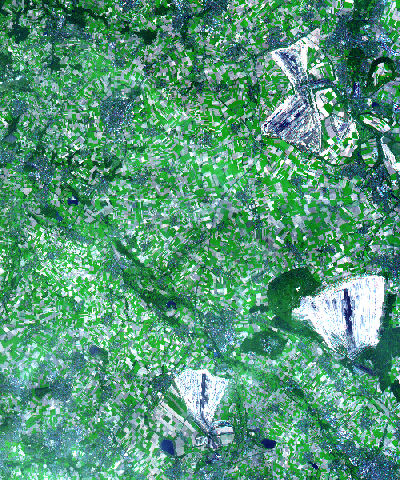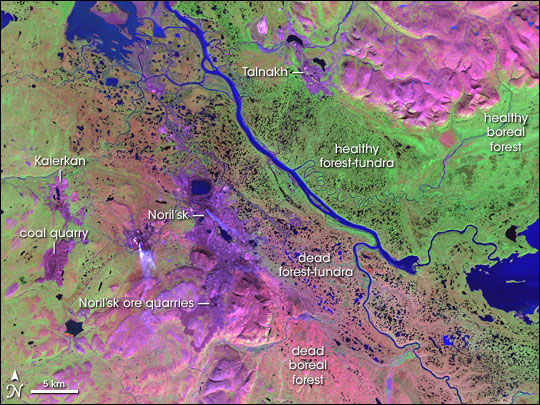4. Waste Management
Mining Waste (1/2)
In addition to individual waste production, mining industries are contributing to a great degree to the global waste production. Mining waste can be amongst the most toxic of waste, since the chemicals involved are normally found underground and are not part of the surface ecosystems.

Source: NASA
Remote sensing can be used to collect data on the area occupied by mining operations, as well as the environment around them. The image below, recreated from data collected from the ASTER sensor onboard NASA's Terra satellite, shows the three coal (lignite) mines in the region of North Rhine Westphalia in Germany.
The town of Noril'sk in Siberia, Russia, is a mining town. The ore that is extracted is rich in sulfur compounds. The processing of the ore releases surfuric dioxide (SO2) in the atmosphere (see the smoke coming out of the plant, just on the left of the town of Noril'sk on the image above). This town alone is responsible for 1% of the global SO2 emissions, and SO2 is contained in acid rain, which contaminates the vegetation and enters in the surface and underground water.
Question: Can you locate the processing plant on the image?
The LANDSAT satellite image above, shows all bare ground in pink or purple. On the other hand, vegetation is shown in green and water in blue. It is obvious that near the hills north-east and south of the town, the damage caused by the contamination is very widespread.

